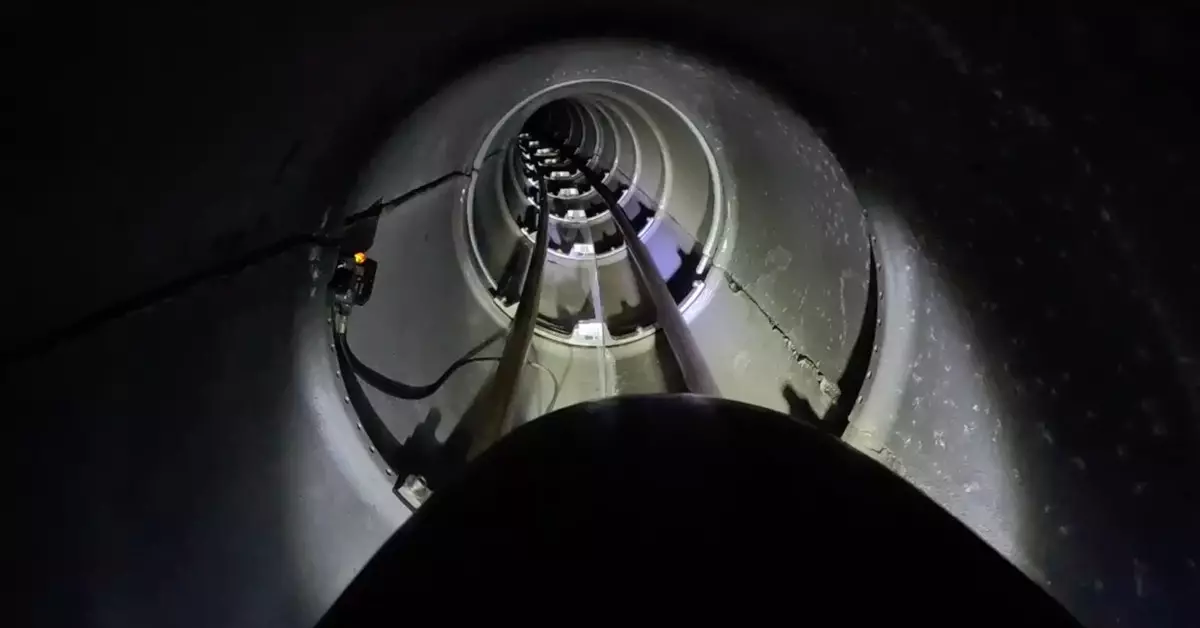The Hyperloop has long captured the imagination of futurists and innovators alike, embodying the promise of high-speed travel within sleek, aerodynamic capsules whisking passengers through low-pressure tubes at extraordinary velocities. Spearheaded by Elon Musk’s ambitious vision, the concept anticipates a revolutionary shift in transportation paradigms, akin to the profound changes ushered in by rail and air travel. Despite significant hype and numerous initiatives, the Hyperloop remains a contentious subject, oscillating between the prospects of groundbreaking advancements and the sobering realities of logistical challenges.
Only recently, a renewed wave of hope emerged from Switzerland, where a 1/12th scale Hyperloop model is undergoing tests in Lausanne. Conducted by a consortium that includes the Federal Institute of Technology Lausanne, School of Business and Engineering Vaud, and Swisspod Technologies, these trials have yielded notable results—the longest test to date recorded a speed of 40.7 kilometers per hour, approximately 25.3 mph, over a distance of 11.8 kilometers. The project, dubbed LIMITLESS, epitomizes the experimental efforts aimed at transforming Musk’s original dream into an engineering reality.
While the test results might seem like strides of progress in a world craving innovation, it’s critical to note that this model in Switzerland operates on a markedly smaller scale than what most envision for future passenger-ready systems. The circular test track’s modest dimensions raise questions about the practical implications of scaling up. For every bit of experimental progress, a necessary skepticism hangs in the air—can this technology transition from small-scale trials to a functioning network capable of handling real-world passenger volume across substantial distances?
Despite the undoubted complexities involved, the key hurdles confronting the Hyperloop are as much financial and regulatory as they are technical. Many startups pursuing the Hyperloop dream have collapsed, beleaguered by operational missteps and mounting skepticism. Critics have rightly pointed out that while adapting existing technologies (like magnetic levitation) shows potential, the full realization of the Hyperloop remains steeped in uncertainty. This skepticism comes not just from failed enterprises, but rooted in the challenges of establishing the necessary infrastructure, acquiring the required backing, and negotiating regulatory roadblocks.
Though the concept presents an attractive alternative to traditional transportation, the financial implications are immense. Building extensive networks, ensuring safety standards, and integrating into existing transport ecosystems demand not only innovation but also substantial capital investment. Until sustainable funding mechanisms are devised, the leap from concept to operational reality remains tenuous at best.
Despite these challenges, proponents like Swisspod’s CEO, Denis Tudor, express optimism. Tudor has indicated plans for testing a freight product and noted efforts to develop a larger test track in the U.S. He argues that these advances could lead to a breakthrough in passenger transport, positioning the Hyperloop not merely as an innovative transport solution, but a transformative force in how people connect and work.
However, the reality is stark: no full-scale Hyperloop has manifested anywhere on the globe. Musk’s own ventures appear increasingly sidelined—the test tunnels once promised as the precursor to Hyperloop technology instead facilitate Tesla vehicles, a detour from the grand vision. Amidst this backdrop, the Hyperloop’s future remains uncertain.
As we navigate the terrain of transportation innovation, the Hyperloop represents a microcosm of the struggle between aspiration and achievement. While incremental advancements in Switzerland’s test project signal that the vision isn’t entirely dead, the field must grapple with substantial challenges that have thwarted past efforts. Hoping to turn a pipe dream into reality requires more than innovative engineering—it demands a comprehensive strategy addressing logistical, financial, and regulatory frameworks.
Only time will tell whether the Hyperloop will transition from its current status as a speculative and experimental venture to a viable, established mode of transportation. Until then, the discourse surrounding it will invariably blend excitement with caution, balancing unyielding hope against the stark realities of economic feasibility and progress. The quest for the Hyperloop continues, yet remains deeply intertwined with the broader narrative of how humans seek to accelerate their movement across distances, dream big, and ultimately redefine connectivity.


Leave a Reply